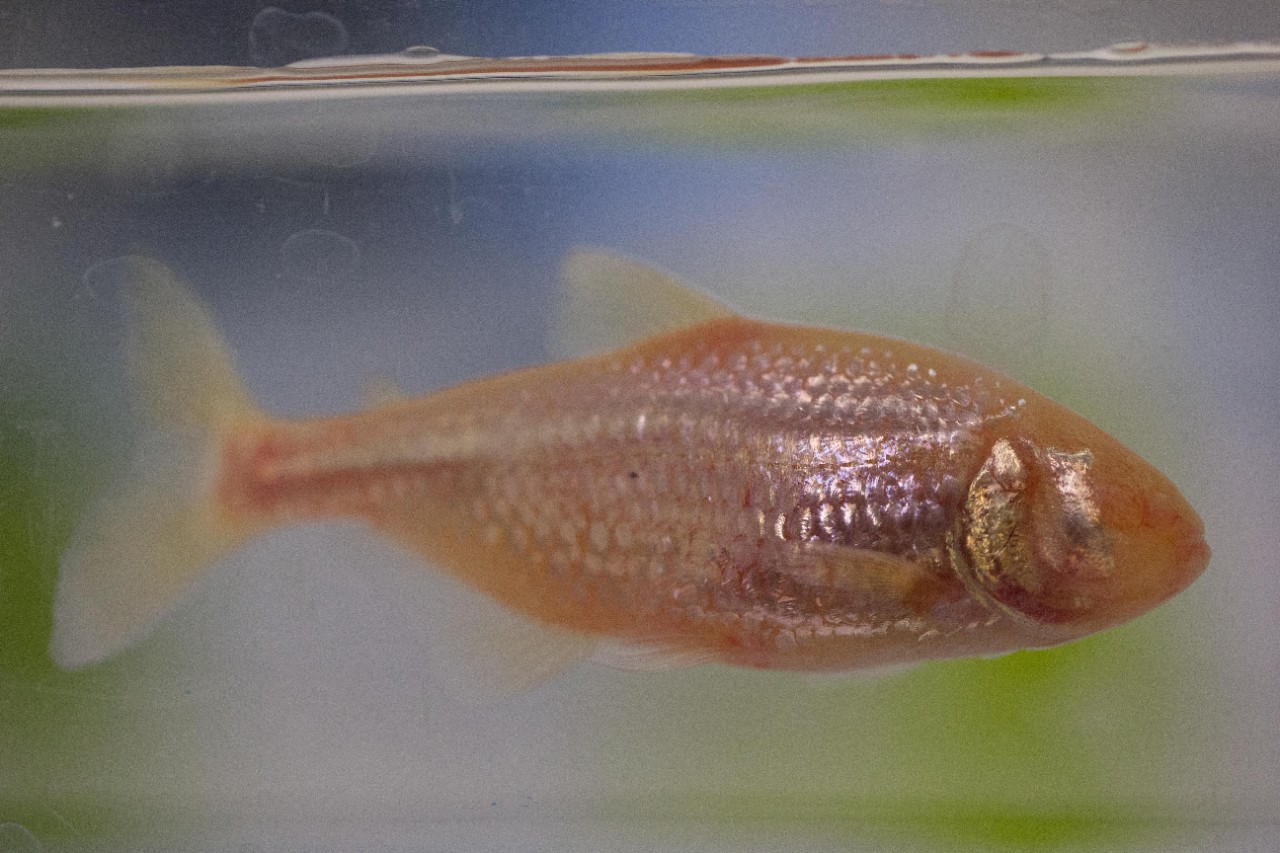
WaPo: Cavefish offer clues to future of human couch potatoes
UC biologist explains sedentary behavior of blind cavefish
The Washington Post turned to a University of Cincinnati biologist to explain how the evolution of Mexican blind cavefish could offer clues to our future evolution given people's increasingly sedentary lifestyles.

UC associate professor Joshua Gross. Photo/Andrew Higley/UC Marketing + Brand
Even people who are active every day had trouble maintaining their lifestyle during the COVID-19 pandemic when gyms, parks, playgrounds and group activities were shut down for social distancing, the Post said.
But UC College of Arts and Sciences associate professor Joshua Gross told the Post that our sedentary lifestyle does not compare to that of the Mexican blind cavefish.
Gross studies the fish and their interesting evolutionary path in his biology lab. The fish were swept deep underground by flooding more than 160,000 years ago and over thousands of generations evolved in dark world that had little food to offer. They lost eyes that had become useless in their dark world while developing other characteristics that help them survive.
Meanwhile, their ancestors continue to thrive on the surface, giving scientists a unique opportunity to compare the animals side by side to see how they diverged.
The Post turned to Gross to explain a new study in the Proceedings of the National Academies of Science that examined how the fish evolved to swim slowly, starve for long periods and get by with less muscle mass and more fat. He was not part of the research.
“What I felt was interesting is that in humans, it has been long understood that a sedentary lifestyle leads to pretty negative health outcomes, but those come within a lifetime,” Gross told the Post. “This study provides an idea of how inactivity can play out not just in a lifetime, but in long-term evolutionary changes.”
In his biology lab, Gross and his students have learned more about how cavefish survive and navigate their low-nutrient, low-oxygen environment.
Read the Washington Post story.
Read more about UC's blind cavefish research.
Featured image at top: A Mexican blind cavefish swims in a UC biology lab. Photo/Andrew Higley/UC Marketing + Brand
Related Stories
News Cincinnati loved in 2025
January 2, 2026
The story of prohibition bootlegger George Remus was among WLWT's favorite segments in 2025. UC Law Professor Christopher Bryant spoke with journalist Lindsay Stone about Remus using a temporary insanity defense during a murder trial.
What to know about this year’s big tax changes
January 2, 2026
Local 12 reported that taxpayers can expect some major changes this tax season. Gary Friedhoff, adjunct instructor at the University of Cincinnati’s Carl H. Lindner College of Business, recently spoke to Local 12 about how to avoid surprises.
Study finds police officers face higher long-term health risks
January 2, 2026
J.C. Barnes, a University of Cincinnati professor, is interviewed by Spectrum News about new research showing that the physical and psychological demands of law enforcement can contribute to earlier deaths.
